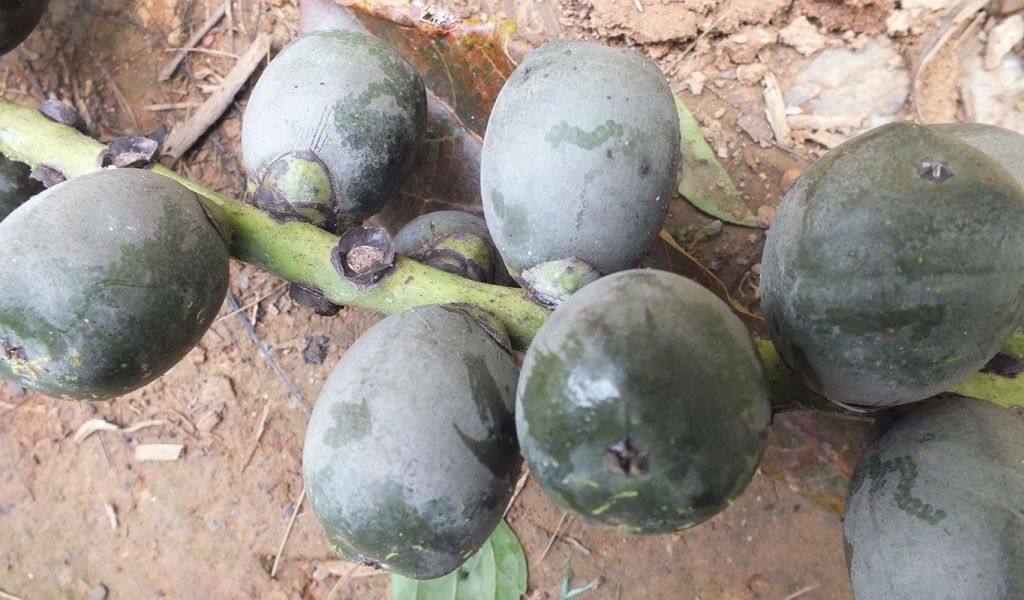ໝາກຕາວ / Westerhout's Sugar Palm
APA 6th ed. ໝາກຕາວ / Westerhout's Sugar Palm. (2021, September 13). Retrieved from https://www.phakhaolao.la/kb/0000017
MLA 8th ed. ໝາກຕາວ / Westerhout's Sugar Palm. Pha Khao Lao, 13 September 2021, https://www.phakhaolao.la/kb/0000017.
Chicago 17th ed. Pha Khao Lao. 2021. "ໝາກຕາວ / Westerhout's Sugar Palm." Published September 13, 2021. https://www.phakhaolao.la/kb/0000017.

Local names: mak tao tat, tao phao, tao kai, tao kouay, tao ngou
Thai: mak tao taad, mak tao, lang kap, hang khai, hang kai, sid, la ka
Cambodian: chrae
Vietnamese: hot doac
English: sugar palm fruits, sweetmeat
Tall unbranched palm with one stem, growing 8-20 m high with a trunk of 5-10 m, and DBH 25-60 cm. The palm has about 15 compound leaves, each 6-10 m long, with 150 pairs of leaflets. Male and female inflorescences occur on separate trees, and can be 1-2 m long. Three to seven female inflorescence form at the top of the palm, with seven to fifteen male inflorescence appearing later and lower down the tree. One inflorescence can have as many as 10,000 female flowers. The green fruit, is 5-8 cm long, ball-shaped and fleshy, growing in clusters of about 36,000. Each fruit contains one to three yellow, fat and sweet seeds. Flowering and fruiting times are still uncertain.
The Mak Tao seed is popularly used in desserts and ice-cream in Laos and Thailand. Young shoots or leaf buds (sometimes called ‘Mak Tao cabbage’) are an edible local delicacy. Leaves are used as roofing and packing material while a sweet drink can be tapped from the top of the male flowers and made into palm wine.
